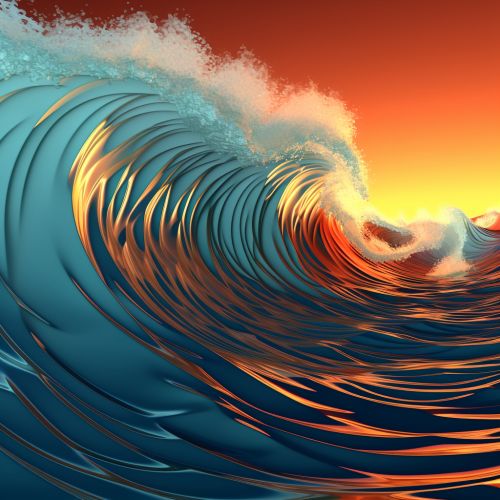Wave propagation
Introduction
Wave propagation refers to the phenomenon of waves traveling through space or various media. This can be exemplified by the movement of electromagnetic waves, such as light, or mechanical waves, such as sound and seismic waves. The speed at which waves propagate is governed by their wavelength and the properties of the medium through which they are traveling.


Types of Wave Propagation
Wave propagation can be categorized into three main types: longitudinal, transverse, and surface waves.
Longitudinal Waves
In longitudinal waves, the displacement of the medium's particles is parallel to the direction of the wave propagation. Sound waves in air are a prime example of this type of wave. Other examples include primary waves (P-waves) in earthquakes and pressure waves in gases and liquids.
Transverse Waves
Transverse waves are characterized by particle displacement perpendicular to the direction of wave propagation. Examples of transverse waves include light waves, radio waves, and secondary waves (S-waves) in earthquakes.
Surface Waves
Surface waves travel along the boundary between two different media, such as the interface between the earth and the atmosphere or the surface of a body of water. These waves include Rayleigh and Love waves in seismology, and ocean surface waves.
Wave Speed
The speed at which a wave propagates through a medium is determined by the wave's wavelength and the properties of the medium. For example, sound waves travel faster through solids than through liquids, and faster through liquids than through gases. This is due to the differences in density and elasticity of these media.
Wave Interference
Wave interference is a phenomenon that occurs when two or more waves meet while traveling along the same medium. The interference of waves causes the medium's displacement to change from its original position. There are two types of interference: constructive and destructive.
Constructive Interference
In constructive interference, the displacement of the medium is greater than the displacement of the individual waves. This occurs when the crest of one wave aligns with the crest of another.
Destructive Interference
In destructive interference, the displacement of the medium is less than the displacement of the individual waves. This occurs when the crest of one wave aligns with the trough of another.
Wave Diffraction
Wave diffraction is the bending of waves around obstacles and the spreading of waves beyond openings. Diffraction occurs with all types of waves, including sound, light, and water waves.
Wave Reflection and Refraction
Waves can also be reflected and refracted when they encounter different media.
Wave Reflection
Wave reflection occurs when a wave encounters a medium that does not absorb the wave's energy and is bounced back into the original medium. Examples of this include light waves reflecting off a mirror or sound waves echoing off a wall.
Wave Refraction
Wave refraction is the change in direction of a wave due to a change in its speed. This is most commonly observed when a wave passes from one medium to another at any angle other than 90°. An example of this is a light wave passing from air into water.
